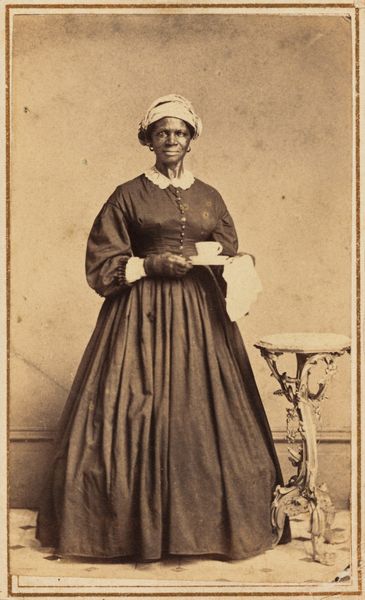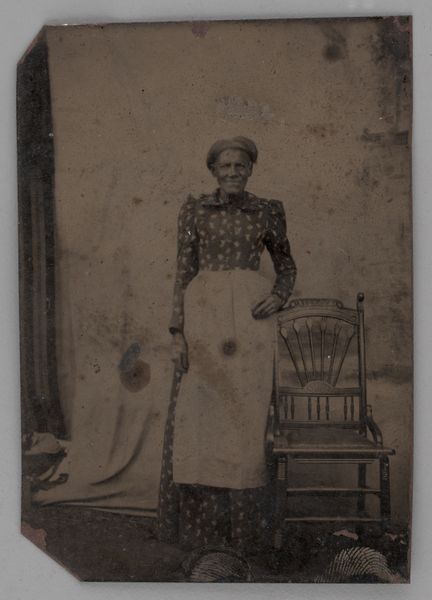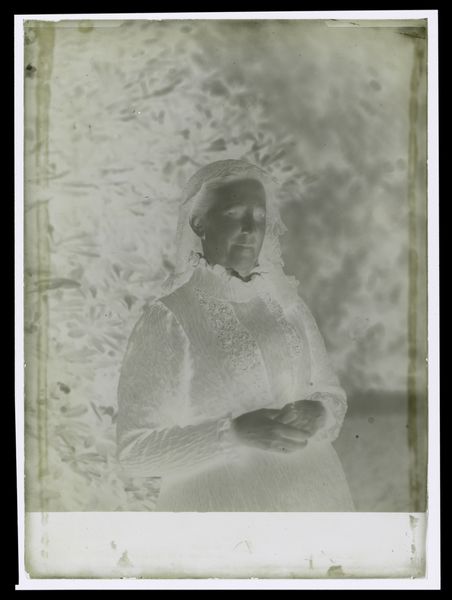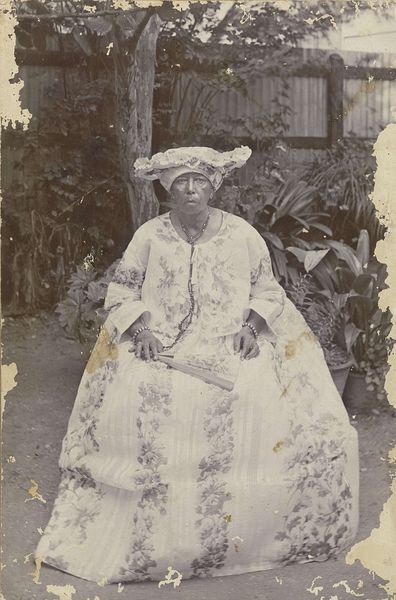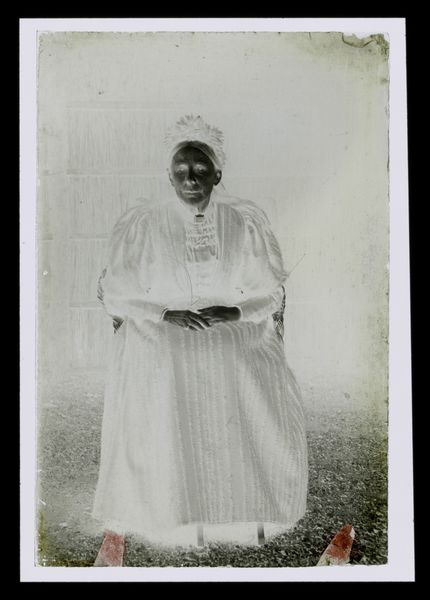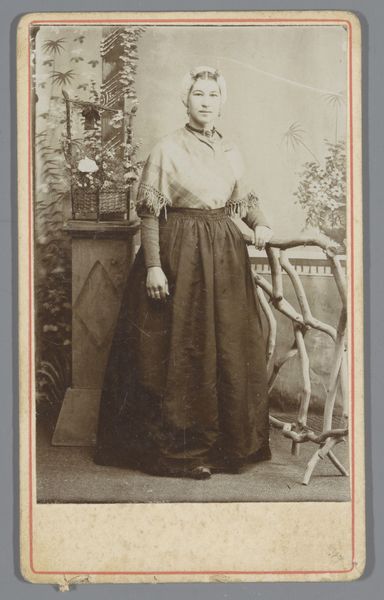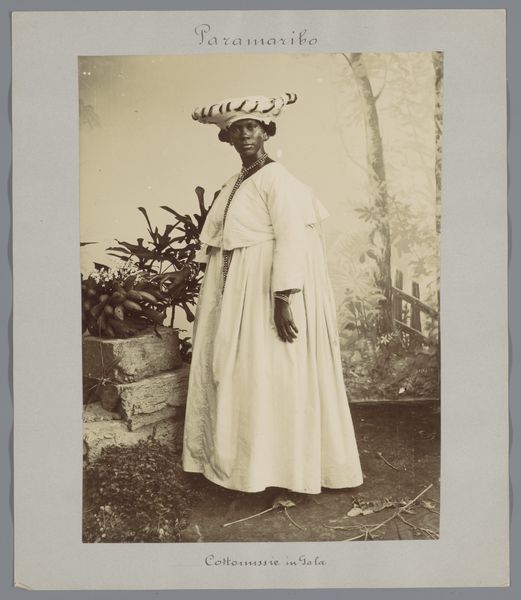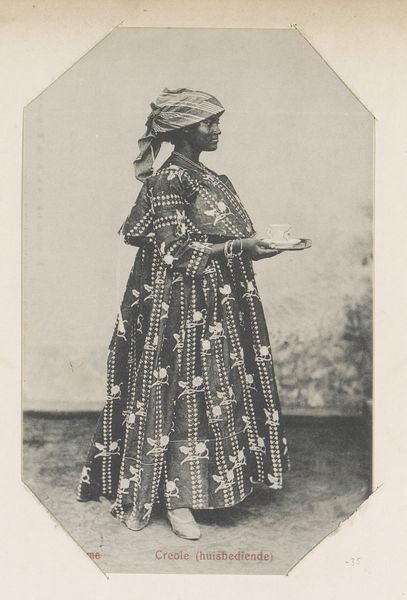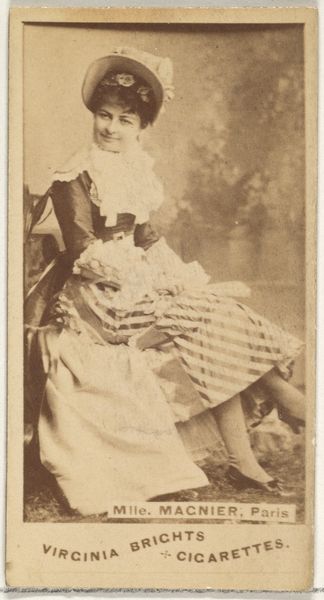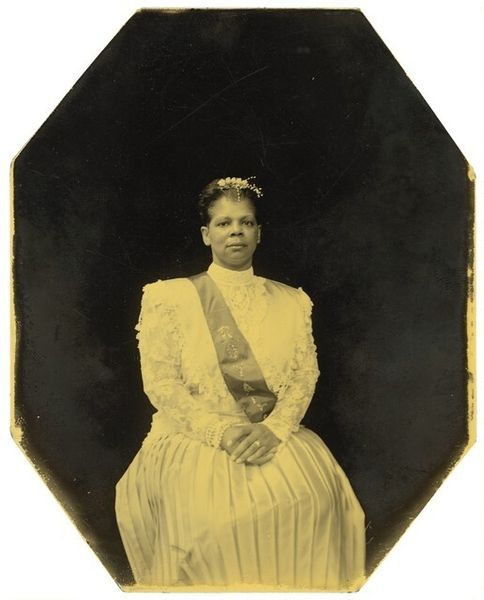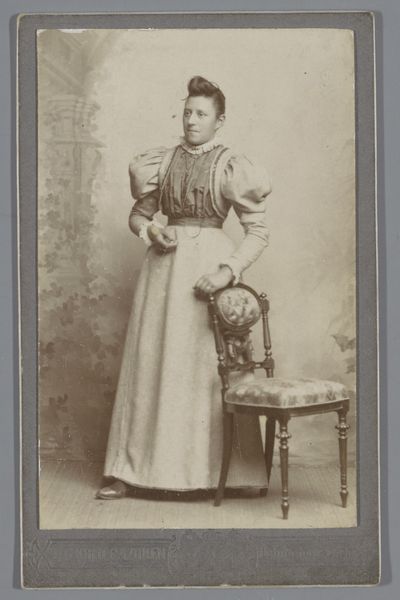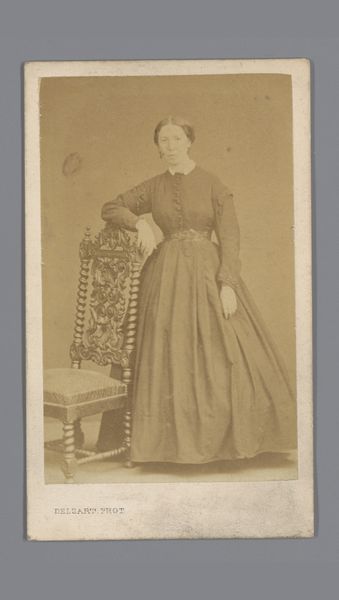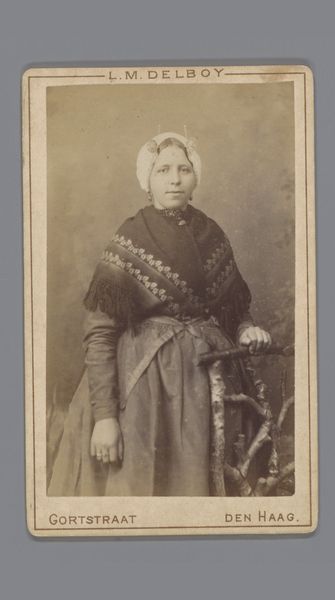![[Studio Portrait: Woman Standing Wearing Shawl, Brazil] by Christiano Junior](/_next/image?url=https%3A%2F%2Fd2w8kbdekdi1gv.cloudfront.net%2FeyJidWNrZXQiOiAiYXJ0ZXJhLWltYWdlcy1idWNrZXQiLCAia2V5IjogImFydHdvcmtzLzhlYmJlYjkzLThhMWEtNDZjYS05M2YxLTk5ZjhkOTA5MDk0Zi84ZWJiZWI5My04YTFhLTQ2Y2EtOTNmMS05OWY4ZDkwOTA5NGZfZnVsbC5qcGciLCAiZWRpdHMiOiB7InJlc2l6ZSI6IHsid2lkdGgiOiAxOTIwLCAiaGVpZ2h0IjogMTkyMCwgImZpdCI6ICJpbnNpZGUifX19&w=3840&q=75)
[Studio Portrait: Woman Standing Wearing Shawl, Brazil] 1864 - 1866
0:00
0:00
photography
#
portrait
#
african-art
#
photography
#
genre-painting
#
realism
Dimensions: Image: 8.8 x 5.4 cm Mount: 10.2 x 6.2 cm
Copyright: Public Domain
Curator: What a strikingly composed photograph. It presents a woman standing behind what appears to be a small table, upon which objects are arranged. There’s a gentle light playing across her form. Editor: It’s beautiful in its stark simplicity, a really touching study in brown and white. The shawl and dress seem tangible; you can almost feel the textures. Curator: This is a studio portrait, created in Brazil between 1864 and 1866 by Christiano Junior. Think about what it would mean to be a woman of African descent, possibly enslaved or recently freed, having her portrait taken at this particular time in history. Editor: Yes, that context of enslavement deeply impacts the photograph. What labor was expected, what opportunities were afforded or denied, even something like this very garment, raises fundamental questions. Who produced this cloth, where did the material originate and how are they implicit in the bigger economic and labor infrastructure of Brazil at that time. Curator: The studio portrait itself becomes a fascinating site. Was this commissioned, an act of agency for the sitter, or does it fulfill some other demand? Editor: And note the way her hands are positioned. Is she displaying items, or is the photographer staging her as a kind of archetype? Those subtle cues speak volumes about the intersection of representation, labour and economic reality of Brazil's class system at that time. Curator: There is a realness that counters a strictly stereotypical interpretation. The fact that it resists a quick, simplified read speaks to the complexity inherent in historical narratives. Editor: Indeed. By considering the technical aspects of the photograph, the materials, the social conditions surrounding it, the artist is essentially documenting Brazil's cultural context and identity and his role within it at that moment in time. Curator: It provides space for critical thinking and allows for richer dialogue to happen between the viewer, the artist, the artwork and our history. Editor: Yes, and it reinforces for me how objects carry narratives related to larger socio-historical implications about production, labour and culture, especially during periods of economic transition.
Comments
No comments
Be the first to comment and join the conversation on the ultimate creative platform.
